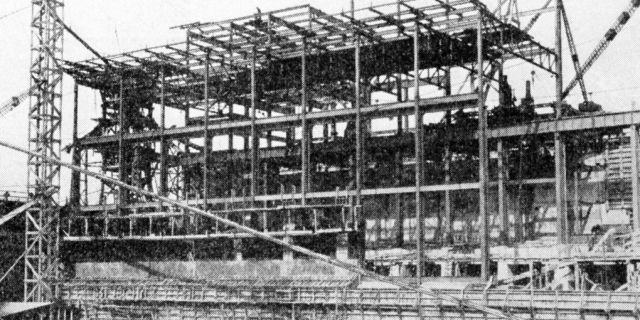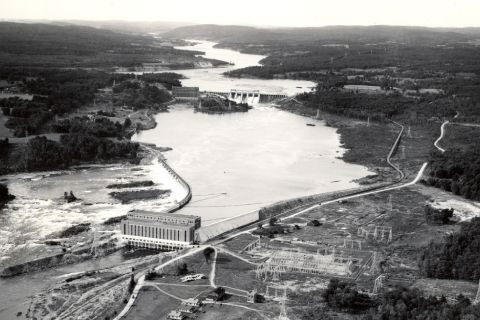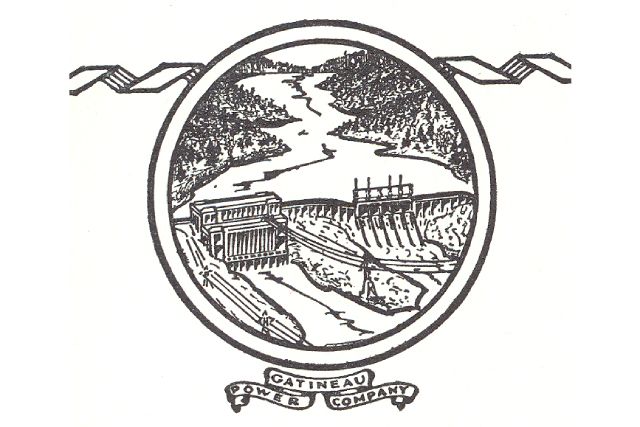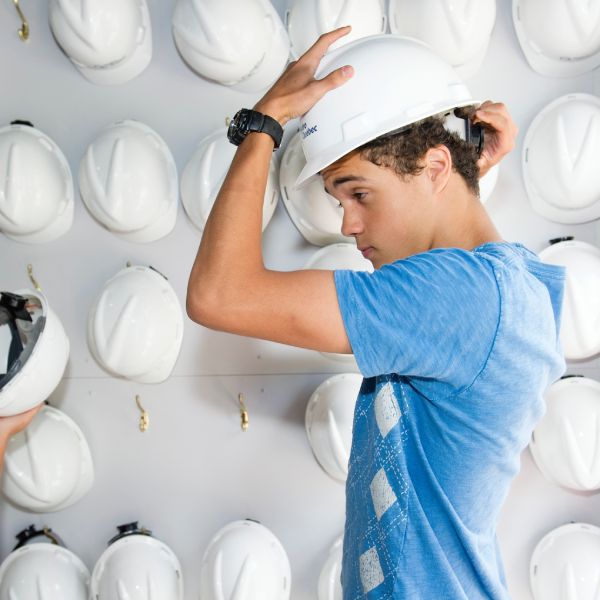The guided tour lasts 90 minutes: 45 minutes in the interpretation center and 45 minutes in the generating station.
During the summer, there are four tours daily, at: 9:30 a.m., 11:15 a.m., 1 p.m., and 2:45 p.m. The tours are generally given in French, for an English tour please call us in advance.
Spaces are limited, so we strongly recommend booking at least 24 hours in advance.
Most of the tour is indoors, with a portion outside.
In case of rain, be sure to dress appropriately and bring an umbrella.
Please note: The temperature inside the generating station can vary significantly from the outdoor temperature. In summer, if it is 25°C outside, it will be about 35°C in the generating station.
Because spaces are limited, reservations are mandatory, regardless of the number of people, and must be made at least 24 hours in advance.
Please note: To confirm your reservation, it is best to make your reservation by phone. The guides will then give you all the necessary instructions before your visit.
The portion of the tour that takes place in the generating station is partially accessible to people with reduced mobility.
The interpretation center and washrooms are not accessible.
Two wheelchairs are available. We recommend calling 1 800 365‑5229 toll‑free to ensure that they have not already been booked.
No. The tour is suitable for school-age children. For safety reasons, children under two are advised not to participate in the tour. (See next question.)
The tour is not recommended for the following reasons:
- Visitors must wear personal protective equipment. However, the size of this equipment is not suitable for children under two.
- The generating station is an industrial property with high heat, noise and dust levels.
Yes. Half of the tour is on foot, including up and down two flights of stairs.
Flat, closed-toe shoes are required.
In case of rain, make sure to dress appropriately and bring an umbrella.
Please note: The temperature inside the generating station is significantly warmer than outside. In summer, if it is 25°C outside, it can reach 35°C inside the generating station.
This is a requirement of Hydro‑Québec’s corporate security management team to protect personnel, visitors and equipment.
Visitors aged 18 and over must present identification (driver’s licence, health insurance card or passport) before they can tour the facility.
No. For safety reasons, it is prohibited to bring a camera or any other electronic device (cell phone, tablet, MP3 player, portable music player or computer) into the generating station.
However, you are permitted to take photos in the interpretation center and outside the security perimeter.
No. For safety reasons, bringing personal effects (handbags, backpacks, cell phones, bags, etc.) into the generating station is prohibited.
Yes, but visitors must carry them at all times.
We recommend staying well hydrated, especially in the summer, as it can be hot in the power plant.
No. The electromagnetic fields in power plants may disrupt pacemaker operation. As a precaution, visitors with pacemakers may not participate in this part of the visit.
No. There are no restaurants, cafeterias, vending machines or dining areas on site.
The tour begins in the generating station’s interpretation center. Directions from Hull:
- Take Boulevard Saint‑Joseph (Route 105) north toward Cantley.
- Take the Alonzo‑Wright Bridge, then Route 307 North.
- Turn left into the first entrance.
(If you are arriving by Route 307 South, turn right into the second entrance instead.)
The parking lot is located along the metal fence. This is where visitors who have registered for a tour must meet their guide 15 minutes before the tour is scheduled to begin.
















